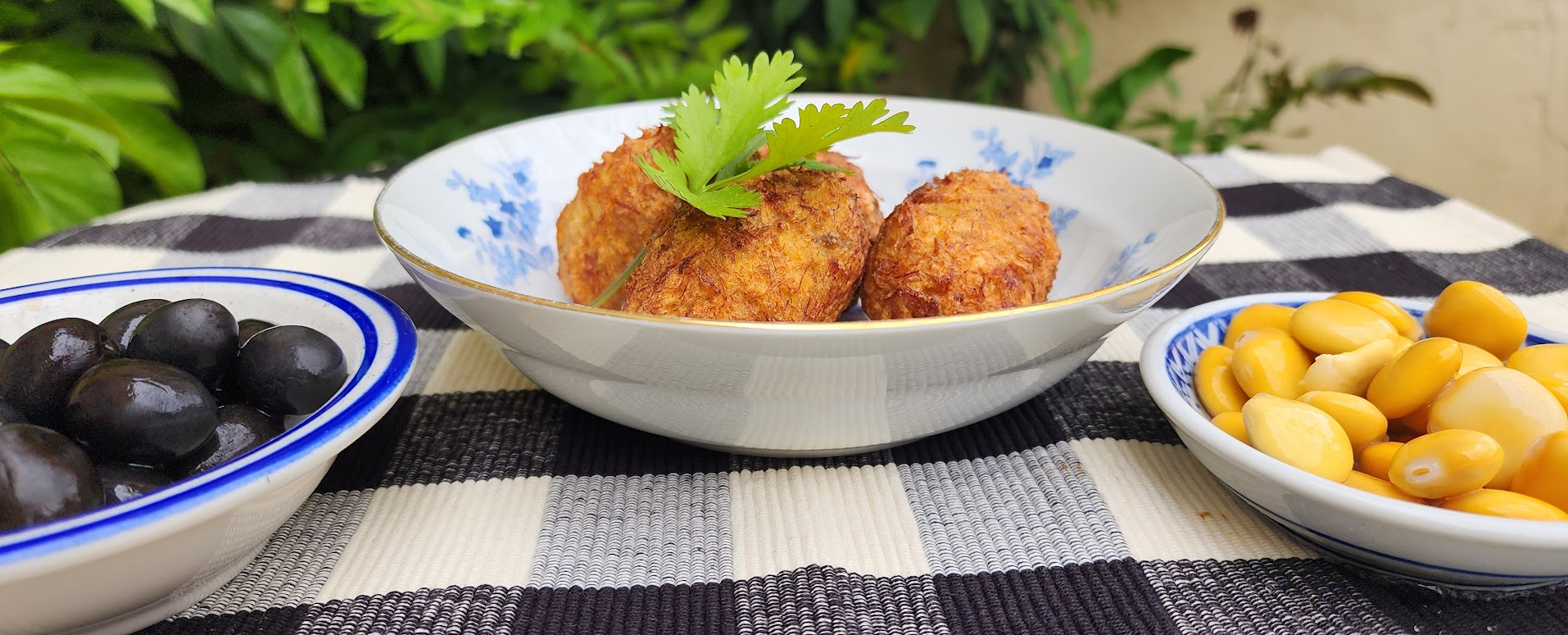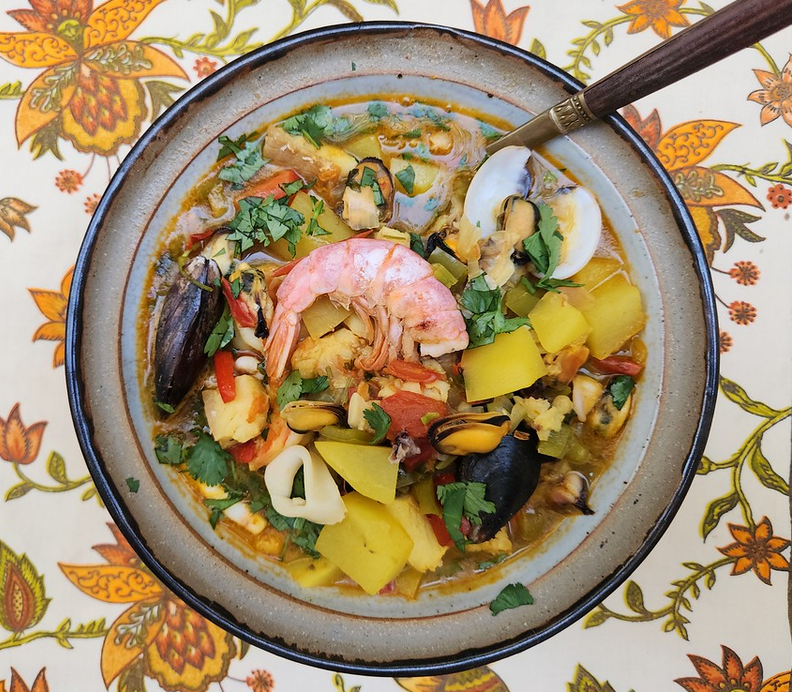Our recipe of the month is for Portuguese Bolinhos de Bacalhau, delicious fried cod croquettes that are a very common snack food in Portugal. They are a ubiquitous popular tapas item that goes well with beer, or a glass of vinho verde (green wine).

Bacalhau, or salted cod, is a staple of Portuguese cuisine with a history that spans centuries. The tradition of preserving codfish through salting dates to the 15th century when Portuguese fishermen ventured into the cold waters of Newfoundland and Greenland. Salting the cod they harvested allowed them to transport the fish back to Portugal without spoilage. Portugal had a huge maritime empire that spanned the globe, and Bacalhau provided a reliable protein source for long voyages. Horrifically, many of the "passengers" (in the millions) on Portuguese ships were people from West Africa who were forcibly brought to the Americas as slaves (predominantly Brazil).
Originally, Portuguese fished for cod in the waters surrounding Newfoundland and Greenland. However, this resulted in overfishing, and in the early part of the 20th Century, Bacalhau that was shipped to Portugal came through trade with Norway. Today, about 70 percent of the Bacalhau in Portugal is supplied by Norwegian fishing companies. Today, many countries around the world have signature dishes made of Bacalhau including Brazil, Spain, Italy, Greece, Cape Verde, Guinea-Bissau, Jamaica, Trinidad and Tobago, and even the Philippines. The average Portuguese person consumes from 50 to 60 pounds of Bacalhau a year! On our recent trip to Portugal, every restaurant we visited had some form of bacalhau on the menu. A Portuguese adage holds that "There are 365 ways to prepare Bacalhau!"
Bolinhos de Bacalhau is not normally enjoyed as a full meal (typically with rice and vegetables), but as a snack to enjoy while sitting with friends in a Portuguese tapas bar, or as an appetizer before a meal. It is a delightful finger-food. In Northern Portugal, where it is believed these snacks originated, they are known as Bolinhos de Bacalhau (small fish cakes), but in the south of Portugal they are more commonly called Pasteis de Bacalhau (salt cod pastries). The Spanish version, is called Croquetas de Bacalao.
Cook's notes:
Bacalhau must be soaked in cold water for 24 to 48 hours (depending on the size of the piece) to remove the salt. The water should be changed several times a day. Even after this soaking, the end result is still quite salty and so the ever-so-common recipe instruction to "salt to taste" doesn't apply.
You can obtain Bacalhau from the Italian grocery in Little Italy, or the Portuguese market in Point Loma. But it can be found in many supermarkets as well and comes in a nice little wooden box. The bacalhau we bought was not entirely dry, so it had to be refrigerated. The much smaller pieces found in the wooden boxes are completely dried.
Bolinhos de Bacalhau can be made into various shapes, most commonly little balls, small elongated croquettes or flat shapes similar to fish cakes.
This dish can be made with fresh cod, but it will probably taste somewhat different.
Sometimes these are made with a coating of breadcrumbs. Some cooks use bechamel sauce as a binder rather than eggs.
Vinho verde, which translates as "green wine," is either red or white. The wines are called "green" because they are fresh tasting and slightly fizzy.
Ingredients:
- 1 pound desalted cod, flaked
- 2 large russet potatoes, boiled and mashed
- 1 medium onion, chopped
- 1 cup all-purpose flour
- 1/4 cup chopped parsley
- 2 large eggs, beaten
- Vegetable oil for frying
- Pepper to taste
Preparation:
- Soak the cod in cold fresh water for 24 to 48 hours. Change the water several times a day.
- Boil (and then bring down to a simmer) cod in water, for 10 to 15 minutes.
- At the same time, in a different pot, boil the potatoes until they are soft enough for mashing.
- Let the cod cool and then shred it with two forks.
- Mash the potatoes.
- In a large bowl, combine the flaked cod, mashed potatoes, chopped onion, beaten eggs, parsley, and pepper. Mix well.
- Gradually add the flour until the mixture is just firm enough to form balls (the mixture should be rather stiff). Be careful not to overmix.
- Shape the mixture into small croquettes or small balls, about 1-inch in diameter.
- Heat vegetable oil in a large frying pan over medium heat (350°).
- Fry the bolinhos in batches until golden brown and cooked through.
- Drain on paper towels and serve hot. As seen in the photo, olives and tremoços (marinaded lupini beans) are a wonderful complement.
Recipe by T. Johnston-O'Neill
Photos by Shari K. Johnston-O'Neill









